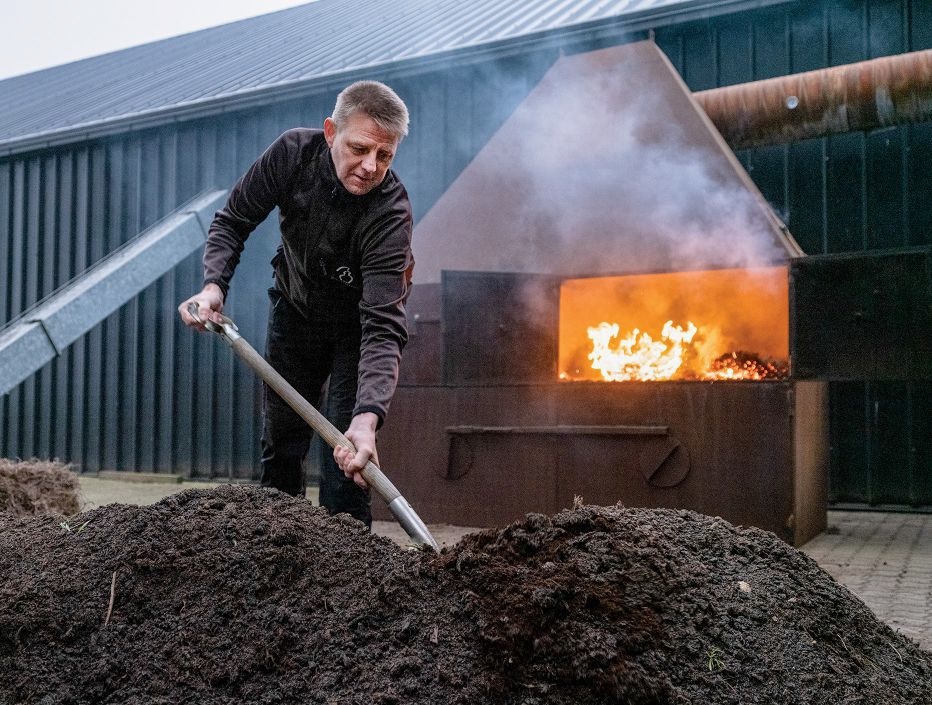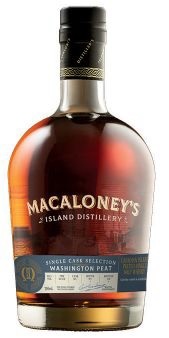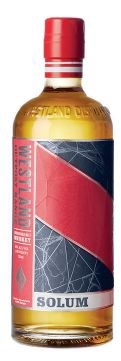[ad_1]
Peat, that decomposed plant materials that when dried and set afire within the kiln, lends smoky, ashy, medicinal, and different alluring flavors to malted barley, is at the start related to Scotland. Even non-scotch whisky makers typically get their peated malt from Scottish malting homes. However some distillers exterior Scotland have tapped into peat nearer to dwelling and are sometimes utilizing completely different strategies to create their smoky whiskies. Within the course of, they’ve found that not all peat is identical.
Scottish expat Graeme Macaloney based Vancouver Island-based Macaloney’s Island Distillery and started distilling there in 2016. When confronted with a deficit of close by maltsters able to peat-smoking barley, Macaloney took issues into his personal fingers. With the assistance of a member of the family, he constructed a smoker that may smoke two tons of barley at a time and produces a smoke density just like that of Laphroaig (which he visited for inspiration previous to constructing his personal smoker).
However Macaloney isn’t making an attempt to repeat Laphroaig—he makes use of Canadian barley and peat from Washington’s Olympic Peninsula, simply throughout the border from Canada. “Individuals get the misperception that in case you have a peaty whisky in hand it’s going to be this huge smoke bomb, irrespective of the place you get it from,” he says. “However utilizing that native taste and grain offers our peated whisky its personal particular nuances—the Washington peat is balanced, and has burning heather and bonfire notes, not something medicinal.” Macaloney’s peat smoker—which additionally first dries the malt—has enabled him to additional pursue native peat in what he’s calling the Peat Undertaking, a collection of whiskies that delves much more intensely into Canadian terroir and can embody a single malt peated with Vancouver Island peat.
Australia’s Nice Southern Distilling Co. makes use of its personal smoker as properly, and its personal method to make a wide range of peated single malts below its Limeburners label. “We’re not utilizing our peat throughout the malting course of, however as a substitute placing it right into a specifically constructed oven and smoking the already malted grains with peat,” says founder and grasp distiller Cameron Syme. “We put peat within the backside of our peat smoker after which use a fuel burner to get it smoldering. We take the peat smoke out of the oven by capturing smoke that in any other case escapes by the sides of our customized scorching smoker field and put it by bits of the malted grain, in what’s each a cold and warm peat-smoking course of.”
Syme’s peat comes from Denmark, Australia— located on the southwestern tip of the nation—the place he has an unique contract with a marine farmer within the space. That peat and the particular processes on the distillery yield flavors fairly completely different from, say, an Islay single malt, with flavors which might be calmly floral and well-integrated into the smoke notes.
Westland Distillery in Washington State made headlines final 12 months when it launched an American single malt utilizing native peat. Beforehand, the distillery had sourced peat from Scotland for its flagship Peated single malt, however it did away with that completely by 2021 in favor of Solum, which is made with peat extracted from a bathroom positioned about two hours south of Seattle. Westland labored with Skagit Valley Malting to each procure the peat after which smoke the malt, in what had been firsts for each corporations. “One of many challenges we’re coping with is that the information of peating malts shouldn’t be right here historically,” says distillery supervisor Tyler Pedersen. “At first we didn’t know the burn price of peat, so we pelletized it, however now we’re feeding it into the machine in a powder type and ramping up the phenolic content material, and that’s giving us a more true sense of terroir, with peat flavors which might be ever so barely smoked and earthy and leathery.”
Peat and Heather in Denmark
A rising contingent of distillers is taking their domestically sourced peat and melding it with homegrown traditions. Alongside the west coast of Denmark, Stauning Whisky’s Smoke isn’t just peated; it’s additionally smoked with heather, an evergreen shrub that’s native to peat bogs and traditionally utilized by Danes for gasoline, bedding, and extra. “Heather is extra easygoing and candy than peat, and provided that it flowers, there’s a floral taste to it as properly,” says distillery co-founder Alex Munch. “After years of experimentation, we began mixing heather and peat collectively as a result of we discovered that they create a extra fascinating smoky taste in whisky than both by itself.” Stauning sources peat from a bathroom half-hour from the distillery and will get its heather from a significant Danish provider. The heather is positioned into the kiln first, adopted by heaps of unfastened peat, which chokes up the fireplace and creates an excessive amount of candy smoke.

In Sweden, Mackmyra makes Svensk Rök single malt utilizing peat from simply 10 miles from the distillery. Right here the peat is mixed with juniper branches for a extra natural form of smoke. Including the juniper twigs to the fireplace is a shout-out to an previous Swedish custom of preserving meat or fish by smoking it with juniper or an analogous wooden. The ensuing taste is bonfire smoke, very woodsy, and harking back to a campfire. Whereas Svensk Rök is the distillery’s most closely peated providing, it additionally blends smaller quantities of peated malt into a couple of of its different whiskies for tender smoke notes.
Terroir Speak
Within the U.S., Illinois-based Thornton Distilling Co.’s head distiller Ari Klafter accomplished a grasp’s diploma in brewing and distilling at Heriot-Watt College in Edinburgh, Scotland, the place he had a lightbulb second about peat’s potential to showcase regionality. “One factor I keep in mind so distinctly from my time there was once we began studying about peat and had been capable of search for completely different peat samples utilizing fuel chromatography,” Klafter says.
“Principally, you’d see how completely different areas pop up in very particular clusters, which informed me that there are particular compounds from sure areas, and that’s after I began to get interested by peat as an expression of terroir and as a manner to herald new flavors which might be extremely region-specific.” Thornton’s peat is floral and grassy with a touch of fruitiness, which Klafter attributes to the longstanding abundance of native flora and prairie grass within the Midwest. The distillery’s first peated single malt is ready to come back out later this 12 months.
Different distillers each out and in of Scotland have additionally tapped into the concept of peat being tied to terroir. Whereas Bruichladdich maintains a particular distillery character in all of its peated single malts, and subsequently doesn’t discover differentiation in peat, head distiller Adam Hannett acknowledges that nice variations are doable. “Peat could be distinctive primarily based on the depth it’s dug from and the combo of vegetation that initially created it,” he notes.
At Thomson Whisky in New Zealand, co-owner and grasp distiller Mat Thomson echoes this opinion. “Our South Island Peat single malt, which makes use of peat harvested from Southland, the South Island’s southernmost area, doesn’t have the total iodine characters of one thing like Islay peat,” he explains. “When you consider seaweed thrown onto the coast of Islay over millennia, giving these peatlands briny, smoky flavors, we’re not getting that— we’re inland, so the plant materials is completely different, and our peat is light and tender.” Thomson has thought of releasing a pair of whiskies, one made out of Scottish peated malt and the opposite with New Zealand peated malt, to showcase how completely different the 2 such whiskies can be. Whereas smaller worldwide distilleries have but to deliver their peated whiskies to the U.S., there are a good variety of domestically peated single malts obtainable stateside, from each home and abroad distillers.
Attempt These Single Malts Made With Native Peat

Macaloney’s Siol Dugal Canadian Single Malt, 46%, $82
Bonfire smoke, cigar, dried apricot, white chocolate, pine, hazelnut, salt, and cloves
Mackmyra Intelligens AI:02 Swedish Single Malt, 46.1%, $70
Inexperienced pear, butterscotch, jalapeño, vanilla fudge, smoke, juniper, and oak spice
Maine Craft Distilling Fifty Stone American Single Malt, 45%, $45
Campfire, salt air, caramel, applesauce, vanilla, iodine, crème brûlée, lemon zest, and hazelnut

Stauning Smoke Danish Single Malt, 47%, $100
Dense smoke, ashy soot, smoked fish, toffee, blackberry, and cinnamon spice (90 factors)

Westland Solum American Single Malt (2nd Version), 50%, $150
Smoke, peat, candy lemon, vanilla, pepper spice, honey, orange peel, and pink berries (92 factors)
[ad_2]

